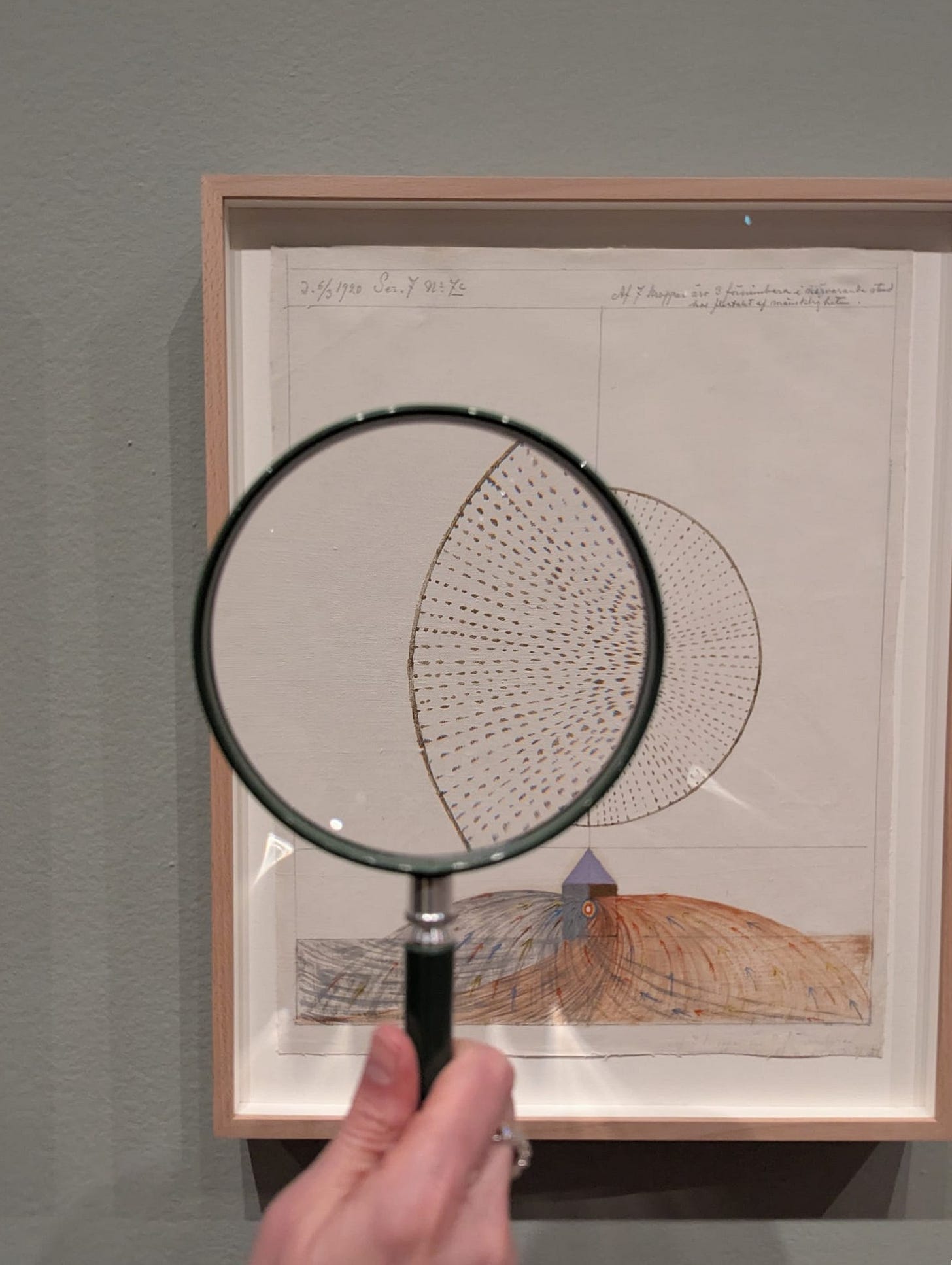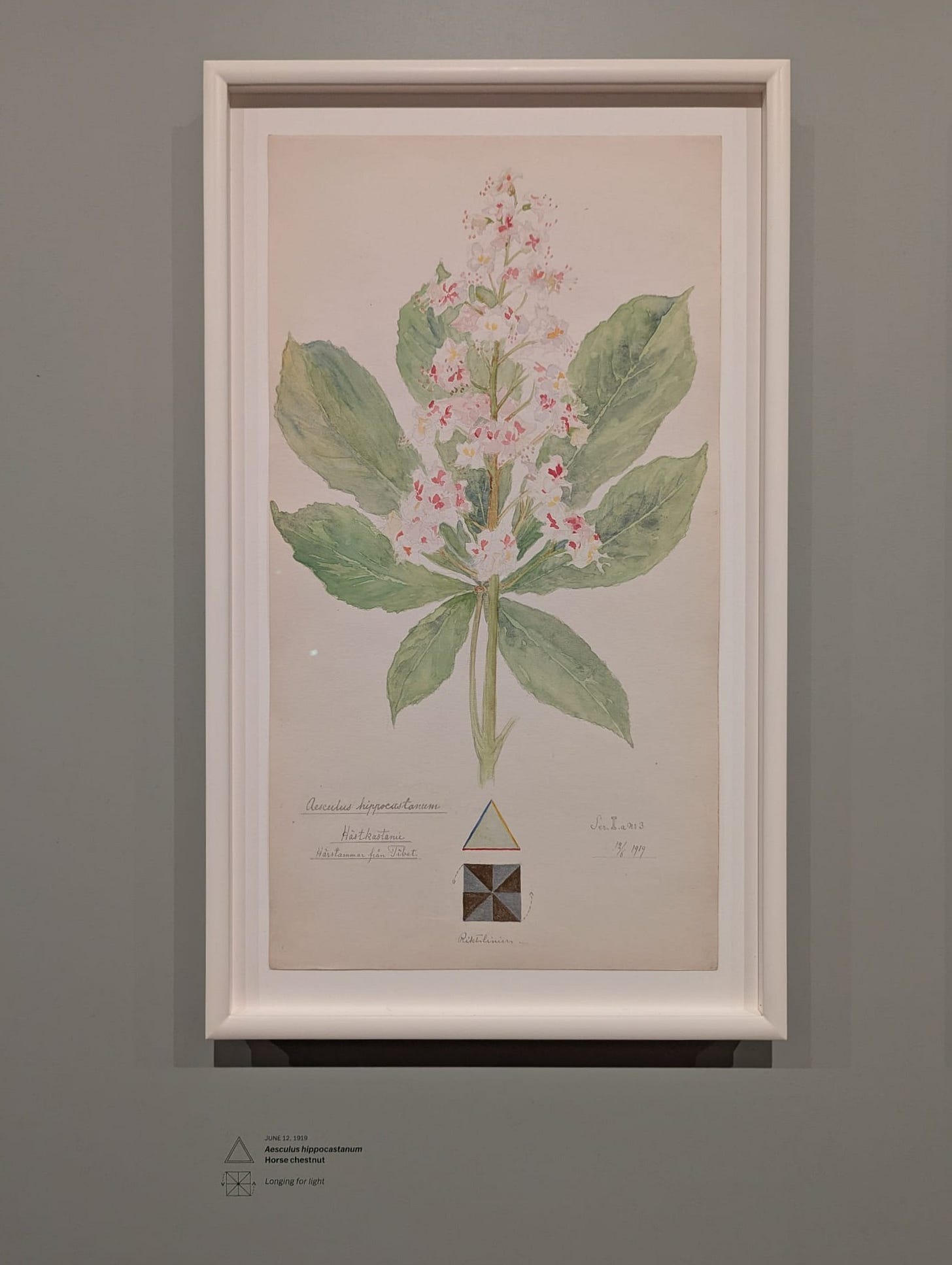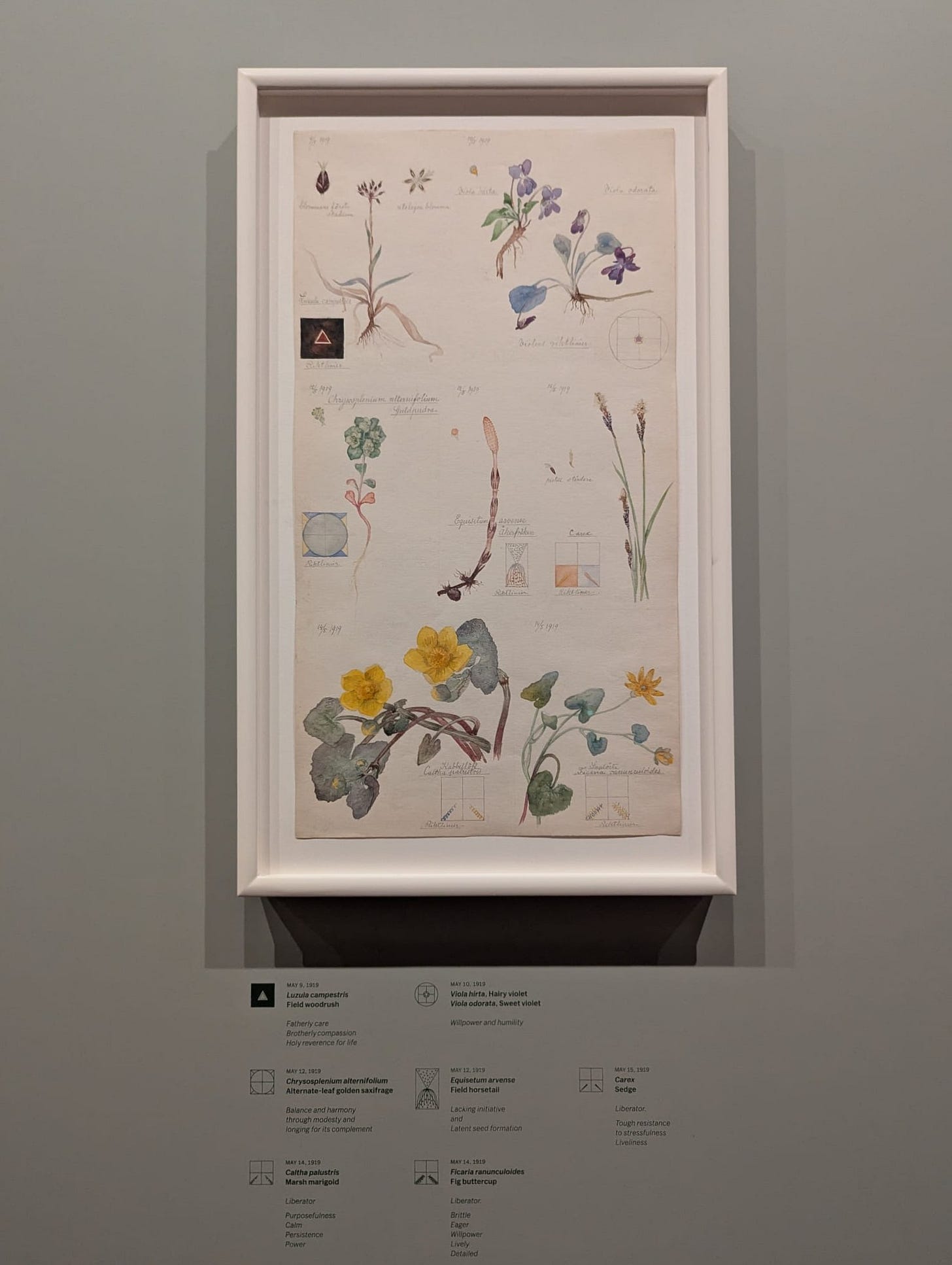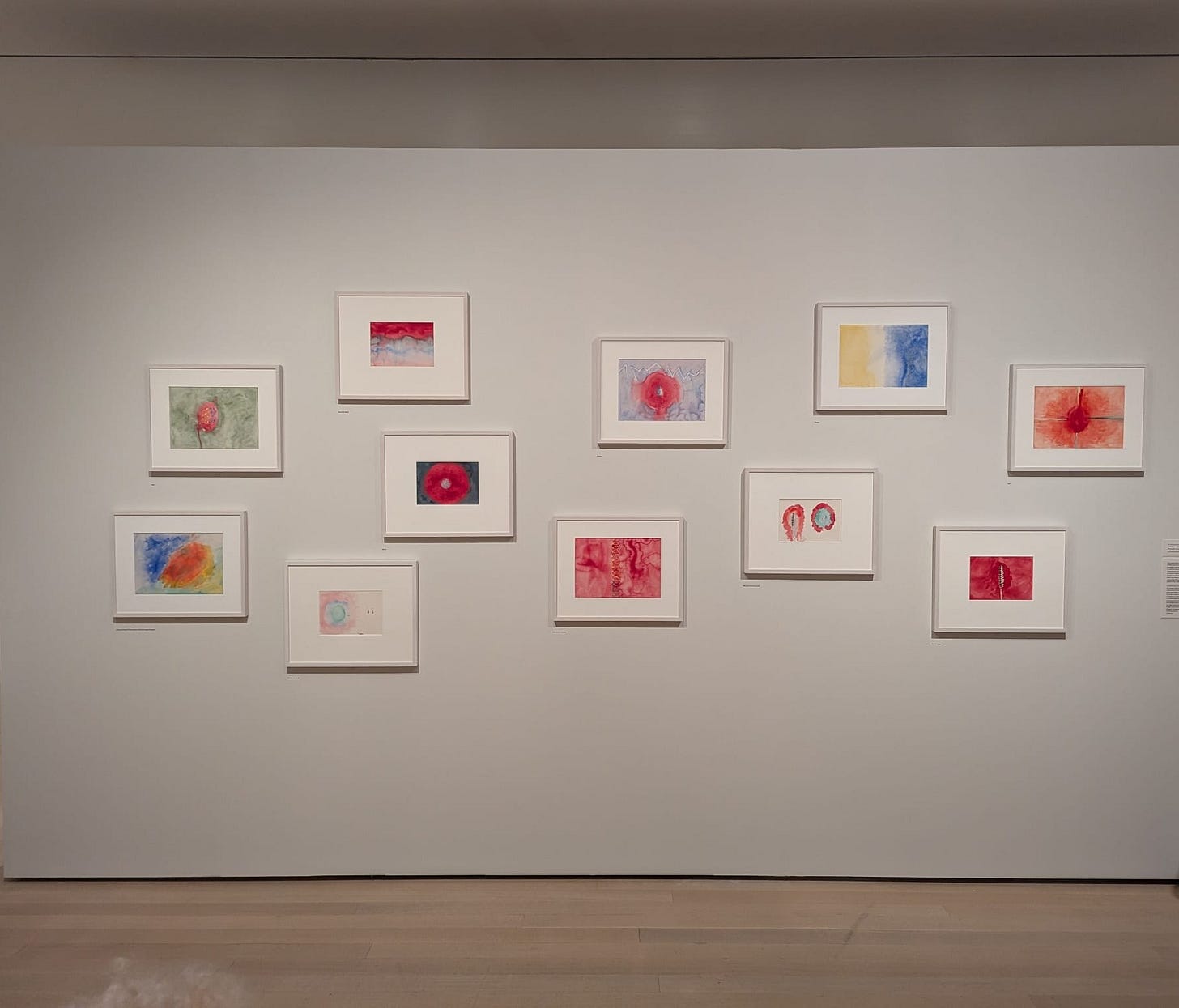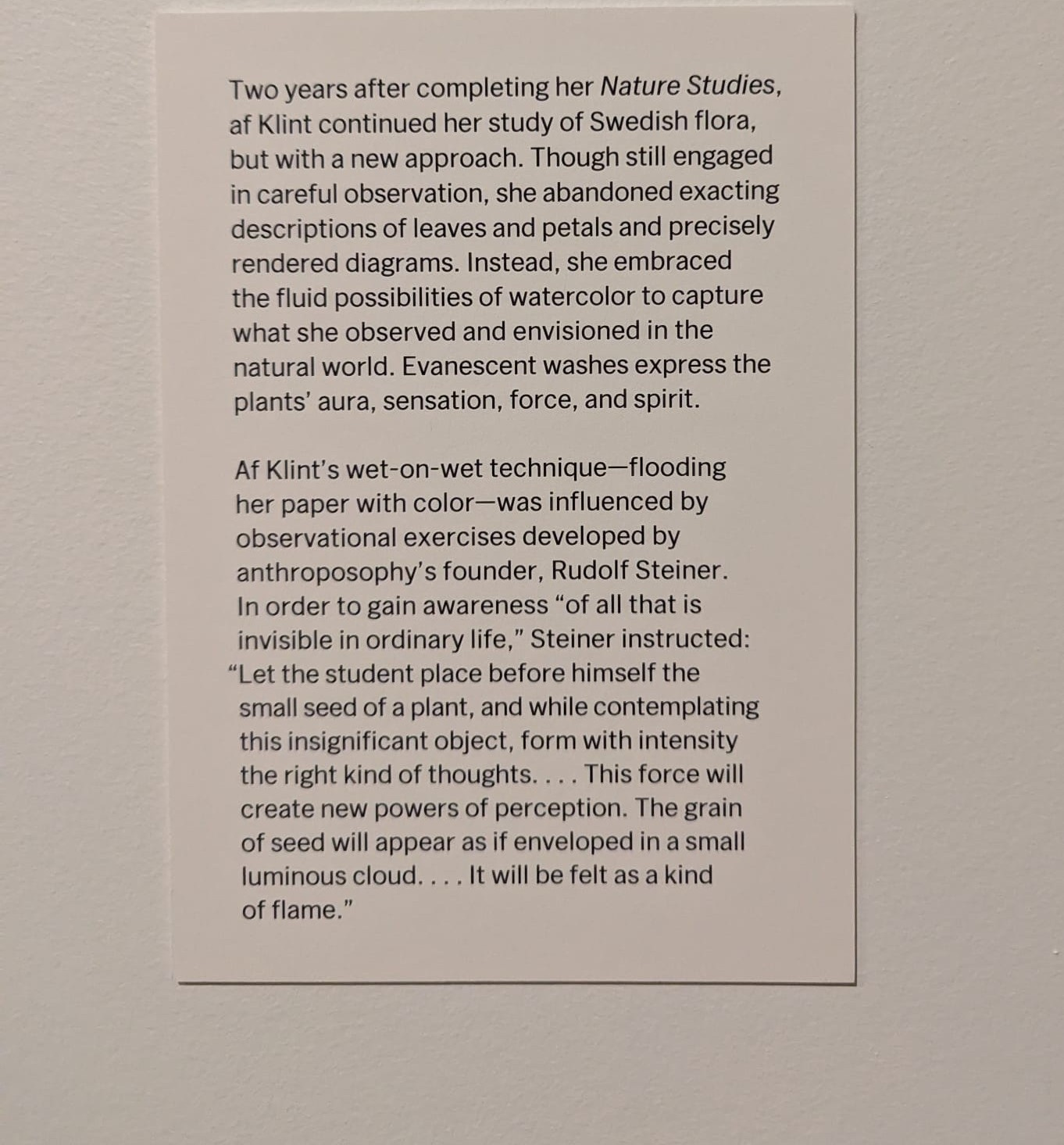Hilma af Klint at MoMA
We're here for her close-up 🔍
Those fortunate enough to have seen the exhibition “Paintings for the Future,” at the Guggenheim in 2018/2019, fully understand the brilliance and talent of Hilma af Klint. Recognizing that the world was not ready for her art, especially this kind of thought-provoking art from a woman, af Klint stipulated that none of her work was to be exhibited until 20 years after her death, (even though it was actually 40+ years later). The largest paintings in that exhibit were called "The Ten Largest," and are approximately 10 feet tall and 7 feet wide. Massive.
The newest af Klint show which opened this weekend at the MoMA in NYC, is very different from the last. The pieces in “What Stands Behind the Flowers” are on a far more intimate scale. In fact, MoMA has provided magnifying glasses to encourage getting right up close to each one.
The works in this new “flowers” show were created approximately one decade later than those in the “future paintings” exhibit and are produced predominantly in watercolor. The current MoMA exhibit is all ostensibly related to plant matter, but the manner in which af Klint handles those renderings is varied and incredibly rewarding. There are smaller works with a similar vernacular to her huge works (see directly below).
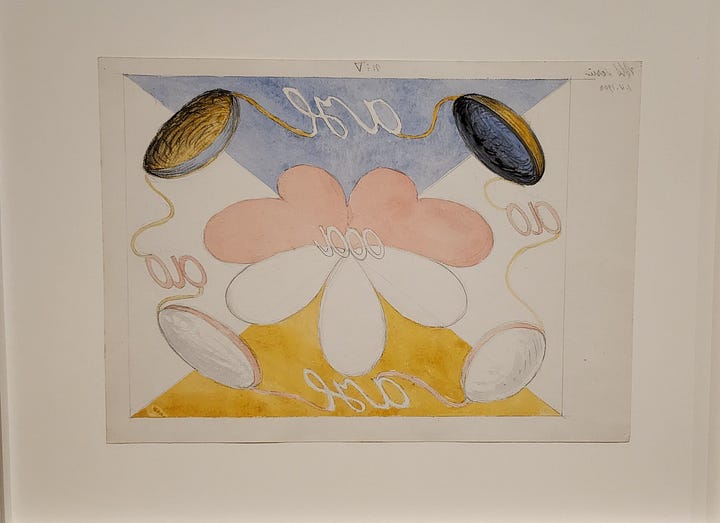
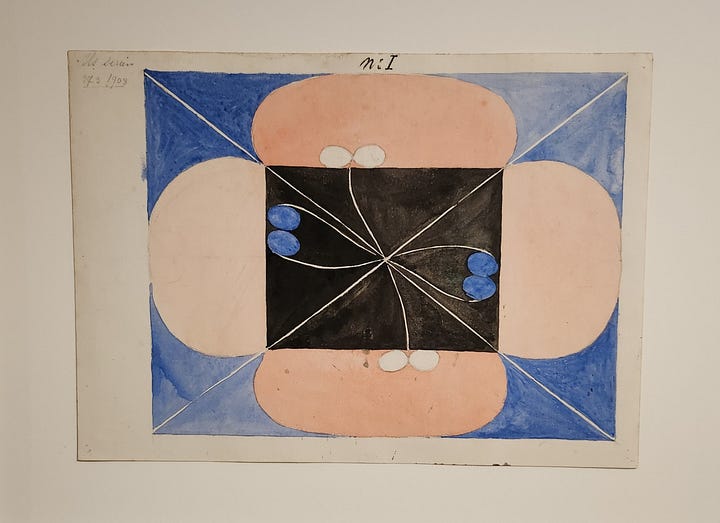
The bulk of the exhibit is dedicated to af Klint's botanical atlas and here is what the gallery wall copy has to say:
For each of the portfolio's hundred plus blooms (and a few animals), af Klint inscribed the species scientific name, sometimes the Swedish common name, and the date of observation. These appear (with the common name in English) below each sheet, a spiritual idea, human character, or state of consciousness that she found in her subjects, as recorded in her notebooks—analysis of the relations among plant, diagram, and spirit.
Walking through this main section of the exhibit, you almost get the sense that af Klint envisioned this show in the future; she is both curator and creator: from room to room, from spring to summer. She organically brings together these 46 nature studies which are of a single format: a watercolor image typically of a single plant—but some have multiple botanicals—and abstract diagraming using her vocabulary of spirals, targets, squares and circles which here, become her own language to describe the characteristics that she perceives each plant to embody. Many of those “diagraming images” appear in her earlier work, but here they reappear and are repurposed differently to describe botanicals and what she perceives them to mean to the world. Zoom in to read the wall copy in these images, or grab your own magnifying glass.
But that’s not all folks.
Included are also some meticulous nature watercolors, like the nearly photo-realistic one below.
Additionally, there is a section of vibrant abstractions.
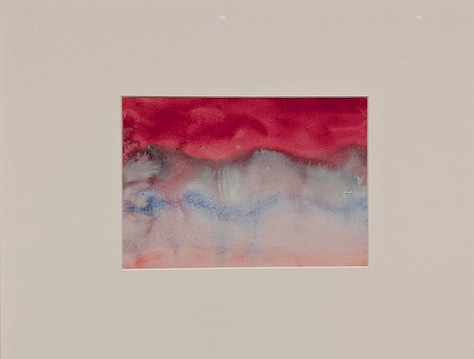
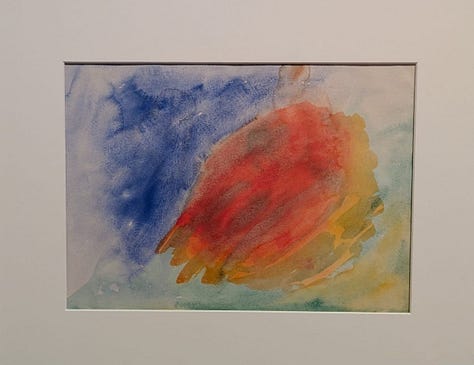
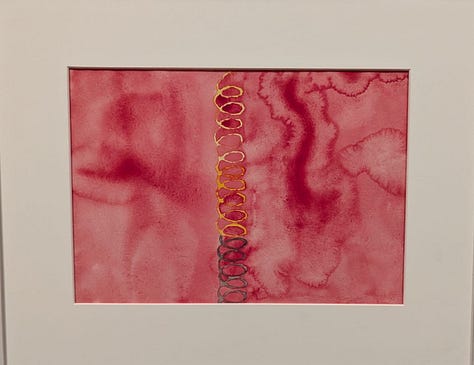
af Klint’s absolute mastery of philosophical, religious, artistic and scientific subjects, and her ability to render them in a transcendent diagrammatic language that feels understandable to all observers, is a gift to the world. The world may have not been ready for her when she began her creative journey at the turn of the 20th century, but her prescience is palpable, and we are the fortunate inheritors of her artistic foresight.




